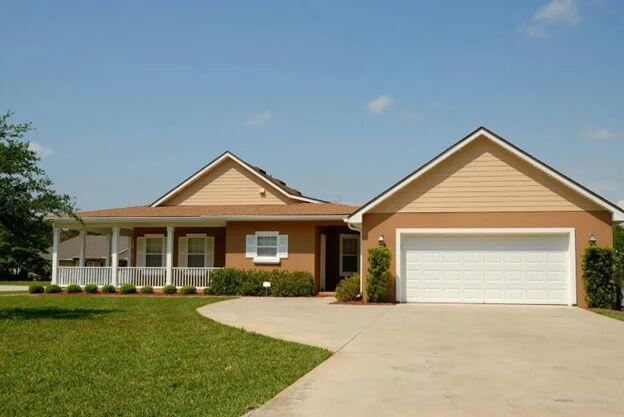Walk the aisles of any home-improvement store and you’ll see dozens of “energy-saving” gadgets. Yet only a handful of projects consistently deliver fast, measurable returns. Solar panels can slash electricity costs, while a freshly sealed driveway can extend its surface life for pennies per square foot.
Together, this pair tackles two of a homeowner’s biggest budget lines: utilities and exterior maintenance. They do this without requiring a down-to-the-studs renovation, making them accessible and high-impact choices.
Solar Panels: Cost, Savings, and Smart-Home Integration
Understanding the initial investment is key to appreciating the long-term gains of solar energy. A typical residential system costs approximately $17,000 before incentives. Fortunately, significant programs are available, including a 30 percent Federal Investment Tax Credit and various state-level rebates.
A 6 kW array in an average-sunlight region can produce roughly 8,500 kWh a year, translating to significant first-year savings. According to the U.S. Department of Energy, homeowners are estimated to save $50,000 over 25 years after installing rooftop solar. Most systems reach their break-even point in seven to nine years.
Modern arrays integrate seamlessly into a smart-home ecosystem. Inverter apps show real-time generation, and exploring options like state-of-the-art solar panels from Sunrun can offer insight into system monitoring and battery integration for evening power. This technology is advancing quickly, with some car manufacturers even testing vehicle-to-home charging.
Beyond financial returns, solar power plants have a lifecycle carbon footprint of less than 40 grams of CO₂ per kWh, far lower than fossil fuels. Studies from the Lawrence Berkeley National Laboratory also show that, on average, solar increased the value of a home by about $15,000, a clear benefit at resale.
| Key Insight: With a break-even point in 7-9 years and lifetime savings often exceeding $40,000, solar panels are a long-term asset that significantly boosts home value while providing substantial, predictable returns on your initial investment. |
Driveway Sealing: Protecting Your Investment
Driveway sealants act like a combination of sunscreen and a raincoat for your pavement. For asphalt, acrylic-based sealers lock out UV rays that cause binder oils to dry and crack. Both prevent damage from freeze-thaw cycles, oil stains, and weed growth.
A proper driveway sealing project can be completed over a weekend, while a professional crew can finish in just a few hours. The cost comparison highlights the value of this maintenance. Sealing runs between $0.10 $0.50 per square foot, depending on the method.
In contrast, full replacement can cost anywhere from $3.00 to $15.00 per square foot. Neglecting this task could lead to a premature replacement bill of thousands.
Essentially, every dollar spent on maintenance can prevent about ten dollars in future reconstruction costs. Investing in quality driveway sealing from Liquid Rubber ensures you’re maximizing that protection.
A well-maintained driveway is also a major factor in curb appeal. Real estate professionals consistently rank driveways among the top items that create a strong first impression. A clean, uniform surface signals diligent upkeep and can support a higher asking price.
| Pro Tip: Think of driveway sealing as a high-yield investment. Every dollar spent on this simple maintenance can prevent approximately ten dollars in future reconstruction costs, protecting your property’s value and curb appeal for pennies. |
Other Energy-Efficient Projects to Consider
While solar and sealing offer significant ROI, other upgrades can complement them to create a comprehensively efficient home:
- Attic-to-rafter insulation upgrades for 15 percent HVAC savings.
- ENERGY STAR windows which can reduce utility bills by $101–$583 annually.
- Heat-pump HVAC systems that use 30–40 percent less energy.
- Smart thermostats which often pay for themselves in just two heating seasons.
- LED lighting retrofits for an immediate 75 percent reduction in lighting wattage.
- Tankless water heaters save an average of $95 yearly.
| Pro Tip: Maximize your financial returns by strategically stacking incentives. Claim both the federal solar tax credit and local efficiency rebates in the same year, and schedule driveway sealing in seasons with ideal temperatures for proper curing. |
Maximizing ROI With Smart Planning
To maximize your return, stack incentives where possible. Many states allow homeowners to claim both the federal tax credit for solar and local rebates for other efficiency upgrades in the same tax year. On the maintenance front, schedule driveway sealing for seasons when temperatures are ideal for proper curing.
By tracking your project costs and monitoring your utility bills or your driveway’s condition over time, you can gather hard data. This information proves these smart decisions paid for themselves and enhanced your home’s value.
